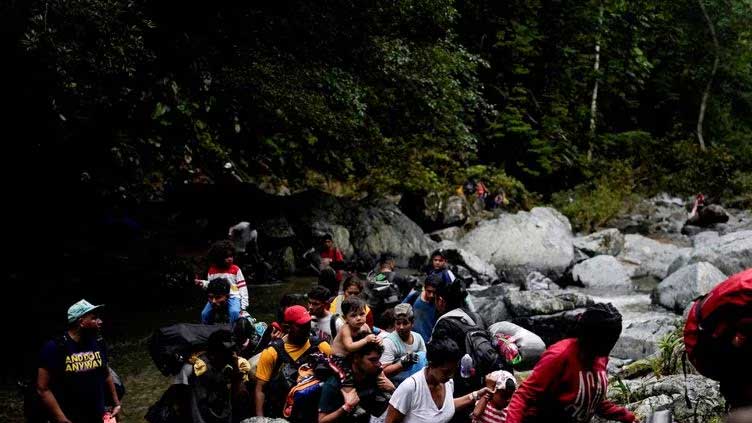Insight: For migrants, the Darién Gap is hell; for adventure tourists, it's a magnet

World
Insight: For migrants, the Darién Gap is hell; for adventure tourists, it's a magnet
MEXICO CITY (Reuters) - Deep in the Panamanian jungle, Venezuelan migrant Franca Ramirez was scrambling to reach higher ground as a rushing river broke its banks, he said, when something caught his eye: a group of young men, snapping photos of the landscape.
The former police officer, who says he fled imprisonment and torture in Venezuela, was surprised.
They were more than a day's journey into the Darien Gap. The notorious stretch of jungle in Panama has become a treacherous part of the journey for tens of thousands of people trekking across the Americas, hoping ultimately to reach the United States.
"I asked if they were migrants," Ramirez said last month, after making it to Mexico. "They said no, that they were creating content and sightseeing in the jungle."
The encounter was a rare moment of two different worlds colliding in one of the planet's wildest places.
The jungle has long attracted hard-core adventurers. It is known as the 'gap' on Panama's Darien isthmus because it is the only missing section, running about 60 miles, on the Pan-American highway that stretches from Alaska to Argentina.
For decades, only the most intrepid of travelers ventured into this once impenetrable forest - dodging guerrillas and bandits; hunting for rare orchids or the great green macaw; and seeking the thrill of being one of the few brave enough to enter the wilderness where the road ends.
As adventure tourism has gained popularity worldwide - from climbing Mount Everest to riding a submarine to view the Titanic - tour agencies have also organized group excursions to the remote jungle.
"Tourism has been on the slow burner for decades in the Darien," said longtime Panamanian tour guide Rick Morales. "The jungle is special because it's powerful and humbling."
In recent years, parts of this jungle have become the site of humanitarian catastrophe. Hundreds of thousands of migrants from across the world, including as far as Afghanistan, and parts of Africa, cross the perilous terrain en route to the U.S. border.
Blocked by visa restrictions from entering countries closer to the United States, a quarter of a million people traversed the lawless region last year.
At least 137 migrants died or went missing, including at least 13 minors, according to the U.N.'s International Organization for Migration (IOM).
In addition to its lack of infrastructure, the Darien poses security challenges: the migrant routes in particular are controlled by criminal groups.
"The real number of migrants who have died and disappeared in the jungle is much, much higher," the IOM said in a statement to Reuters.
Tourists and migrants rarely meet face to face; the routes are almost always separated by dozens of miles. The migration routes hug the Darien's northern coast on the Caribbean Sea, which offers the most direct path to traverse the roadless jungle. The vast majority of tourism occurs closer to the Pacific Ocean.

